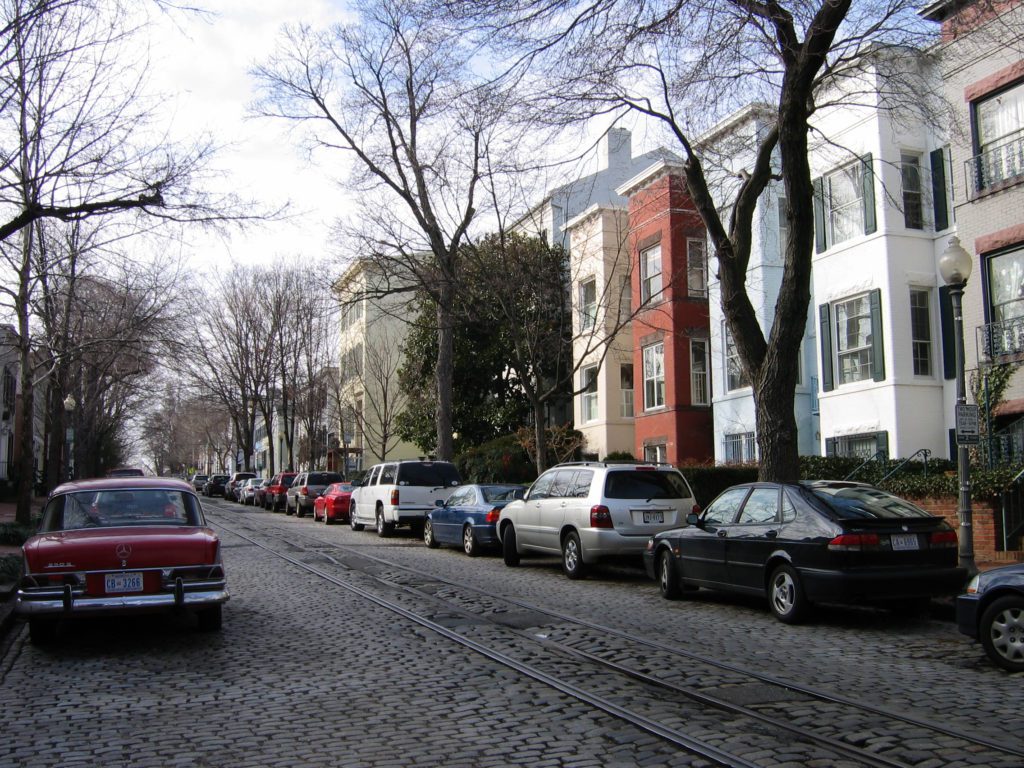‘Walk the Beat’ Brings Gasps, Enlightenment
By • February 9, 2017 0 1130

“Oh my, oh my! Look at this!” squealed several ladies of a certain age on Saturday, Feb. 4, during an afternoon walk along Georgetown’s waterfront park with one of the neighborhood’s top cops, Antonial Atkins, and Officer Laurel of the U.S. Park Police. The group of about 15 pressed their faces against the glass of the front windows of a car parked (legally) directly across from the AMC Loews theaters — and gasped.
On the floor in front of the front passenger seat was a large open bag full of stuff. On top of the stuff was what looked like a large open wallet. The back seats were filled with children’s items: blankets, car seats, nothing valuable per se. The car was locked. But …
“It’s a perfect target for car thieves,” Laurel pointed out. “They can be inside and remove valuable items in less than a minute.”
“This can create a wave,” Atkins added. “The more people are careless in a community, the more the area will attract more thieves.”
There has been an uptick of such crimes in Georgetown and in D.C. generally over the past year. “I have seen more crime and don’t feel as safe walking around as I did for the past 30 years,” said Meg Hardon, who lives by the Georgetown waterfront.
D.C. police are being reorganized into smaller patrol areas and assigned to not only drive their beats but to bike and walk them as well.
That is why Atkins created the “Walk the Beat” program, encouraging citizens to come out, walk along with their neighborhood police officers and see what they see. Along K Street, in some 25 percent of cars parked between Wisconsin Avenue and Thomas Jefferson Street (five cars out of 20), tempting items were visible, from car phone chargers to wrapped packages resting on the seats and floors.
As the group walked up 31st Street past the post office, then along N Street and back to Wisconsin Avenue down to the riverside park, the officers pointed out and talked about other temptations for thieves: packages by front doors, open back doors, even keys sitting in locks.
“Neighbors have to be the first line of defense, according to the beat cops,” the police officers said. They urged participants to inform their neighbors about packages, open doors, forgotten keys and the like, and to call 911 about suspicious loiterers.
One beat-walker questioned why the police dispatcher takes so much time on the phone asking so many detailed questions before the responders arrive. Isn’t that wasting time?
“They’re on their way as you speak,” answered Atkins. Your detailed answers are transmitted directly to the first responders to help them assess the situation. Stay on the line and answer everything as best you can.”
The officers also suggested openly observing a suspicious activity. “Turn around and calmly observe suspicious loiterers,” suggested Zunnobia Hakir, an MPD hate-crimes officer who initially gathered with the group. “Don’t stare at them hostilely, but let them see you notice them. Even say something as you pass, like ‘How ya doing?’ or simply a nod a recognition. Even take a surreptitious photo of the ‘scenery,’” he said. “It’s amazing when someone with bad intentions feels they’ve been noticed, they’ll be hesitant to do something bad.”
At M and 31st Streets, Officer Atkins and the group stopped to chat briefly with a street person who looked like he was begging. “Just an acknowledgement can help lessen bad ideas and feelings,” Atkins repeated.
By alerting law enforcement, citizens can help officers make detentions and arrests. Recently a man engaging in lewd acts near Rose Park was noticed by a neighbor, who called 911. Police responded quickly and the man was arrested. “The citizen who reported this incident remained in the area to be a great witness. Text book what citizens should do,” wrote Officer Atkins in a neighborhood email on Feb. 5.
More Walk the Beat events are currently being planned.

